A Gold Coast Vietnam veteran has discovered the incredible true story of his two grandfathers, who fought across four wars through the early 20th century, from China's Boxer Rebellion to the battlefields of South Africa, Gallipoli and Japan. SEE THE FULL STORY.
Resplendent in his slouch hat and the uniform of the 1st Australian Infantry Regiment, the 21-year-old grips his sabre ready for action.
Lieutenant Lofts, or H.E as he was known to his mates, has been dead for 65 years, but it was only late last year that his grandson, Gold Coaster Peter Lofts, laid eyes on him.
The 73-year-old Vietnam veteran and history buff arrived at Southport library last year to pick up Bluejackets and Boxers, a history book covering China’s Boxer Rebellion.
He started to flick through the pages and then stopped.
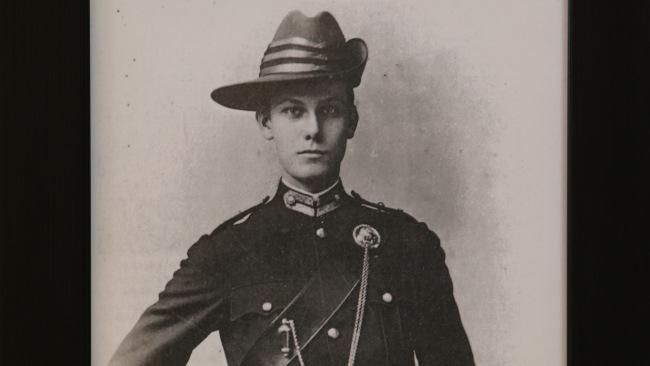
Then it hit him. Staring back at him was a full-page photo of H.E Lofts, the commanding officer of the New South Wales Marine Light Infantry unit that served in China during the 1900 conflict.Immediately, he realised he had just met his grandfather.
“He was 21 years old when that photograph was taken,” Mr Lofts said.
“He’s just a kid and yet all those men were under his command.”
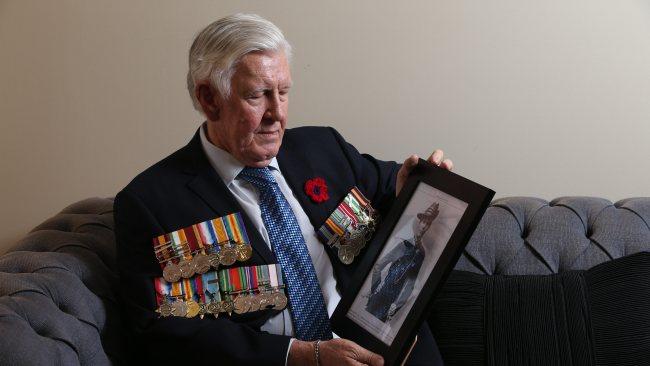
That moment, less than a year ago, began a journey of discovery for the Paradise Waters resident who had spent a lifetime in obscurity about the lives of his ancestors.
Within months, he would discover his other grandfather and his journey through two world wars.
Mr Lofts was stunned to find the lives of his grandfathers had intertwined across decades of conflict.
Both men are long dead, their original medals and war letters lost to time and their stories never told.Until now.
JUST A KID
“I never knew (H.E Lofts), never knew anything about him whatsoever,” Mr Lofts says.
“I don’t know why because the only capacity in which my father ever spoke of him was that he had led the NSW marines in the Boxer Rebellion. That’s it.
“When I saw that picture, I realised what my father had told me was true.
“It was quite a shock and it made me wonder what else there was to know about him.
“Nobody in my family knew that H.E Lofts served in those military exercises and eventually went to the First World War.”
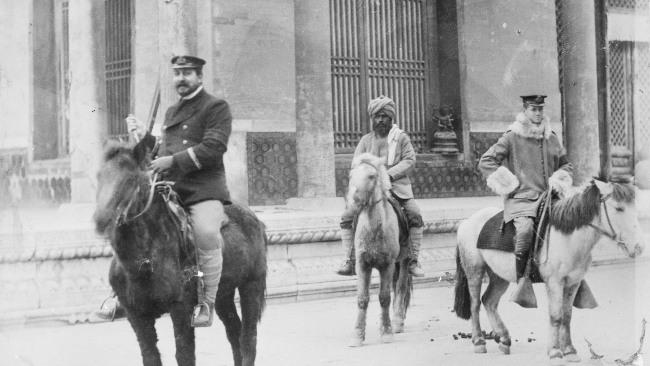
H.E Lofts was 21 when he was transferred from the 1st Australian Infantry Regiment to command the NSW Marine Light Infantry and sent to China in early 1900 to put down the Boxer Rebellion, an uprising against the major colonial powers of the era.
Lt Lofts, from Sydney, was one of 550 Australians who joined the Eight-Nation Alliance that successfully defeated the Chinese army.However he is not believed to have seen combat.
“I don’t think he actually fired a shot in anger there,” his grandson says.
“They mostly rode around on horseback, they were honour guards for different people.“When he got to China he actually took a camera, one of the few people that took photographs of what was happening over there.
“When he got back from China, because he’d held that level of command and control, all of a sudden he was shot through to the Boer War where he spent two years.
“There were a lot more shots fired there.”
FROM CHINA TO SOUTH AFRICA AND THE PACIFIC
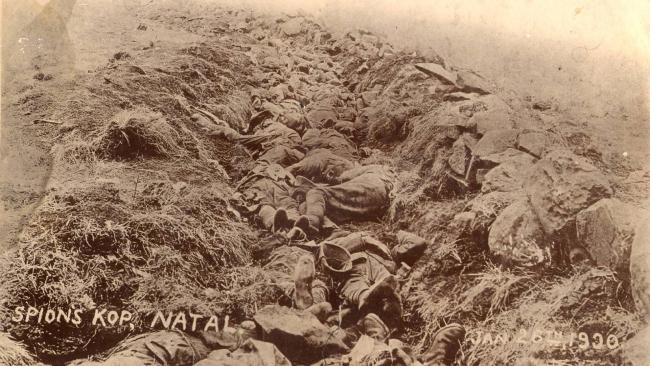
THE Boer War was a near-three-year conflict between the British Empire and two independent states that controlled much of what is today South Africa – The Republic of Transvaal and the Orange Free State.It raged from late-1899 to mid-1902.
H.E Lofts arrived in late-1900 and remained in the service until the conflict ended, finally returning to Australia.
“The Boer War was a dirty conflict, the British lost thousands of people to their own incompetence, like Breaker Morant, and a lot of the people who were over there didn’t want to talk about what happened,” Mr Lofts says.
“It was a lot like what happened in Vietnam.”Little is known about Lt Lofts’ life after his 1902 return to Australia, until he surfaced again in military records in the early years of World War I.

In 1915, he joined the Australian Naval and Military Expeditionary Force, a 2000-person volunteer infantry unit that fought one of the war’s earliest engagements, seizing Germany New Guinea in late 1914.
Lt Lofts was significantly older than most of his peers, by then a 38-year-old married father of one and veteran of two conflicts.
Instead of frontline service in Europe or the Dardanelles, he played a role in the occupation of Rabaul in the former German colony of New Britain.Records reveal he embarked from Sydney in January 1916 as a member of the 4th Tropical Force aboard SS Te Anau and remained in Rabaul for a year, serving in various billets including postmaster.
He would be promoted to the rank of captain.But the tropical jungle environment came at a cost and Captain Lofts was struck down with malaria, evacuated to Australia in early 1917 and discharged from the service.He lived the rest of his life in anonymity and distant from his family, dying in 1956 at age 79.
“Those guys fought and died by the thousands,” Mr Lofts says.
“They had to fight, often without the right equipment and proper uniforms, without food or support and they did it before having to bury their mates.
“Most of the men who came back from those wars got just a handful of medals. Not much to show for it.”
A FAMILY LEGACY
Mr Lofts unwittingly followed in his grandfathers’ footsteps, joining the Navy in 1965, in lieu of a career in medicine.
Becoming an elite clearance diver, he served a tour in the Vietnam War from 1968 to 1969 aboard the guided missile destroyer HMAS Perth which was based in the Gulf of Tonkin.

He returned to Australia and by late 1972 had just completed an eight-week training course at Canungra ahead of a planned second tour in Vietnam when new Prime Minister Gough Whitlam announced Australia’s exit from the conflict.
“That really pissed us off at the time,” he says.
He retired from the Navy in 1974 as a Leading Seaman and went into private enterprise, qualifying for a marine master’s certificate in 1978 and running a shipping company in Papua New Guinea for five years.
TO GALLIPOLI AND BEYOND
THE Gold Coast businessman’s research into the life of his paternal grandfather through late-2020 and early-2021 inspired him to delve into the life of his maternal grandfather, Bernard Alexander Fallon.
What Mr Lofts found astounded him.
Born in NSW in 1895, Digger Fallon grew up in Sydney, not far from where H.E Lofts lived.At age 19 in late 1914, he volunteered for the Australian Imperial Force during the early months of World War I.
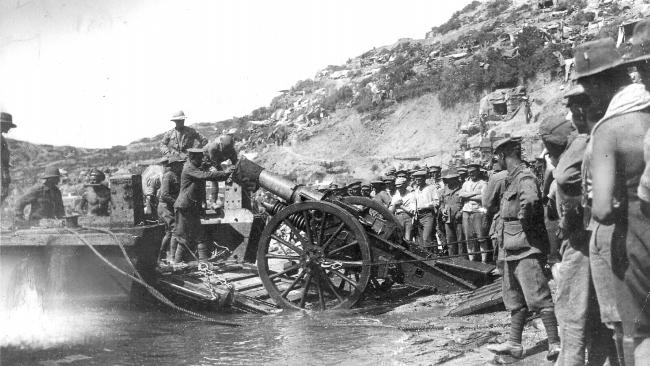
Six months after signing up, he landed with Anzac forces at Gallipoli in the early hours of April 25, 1915 as a member of 1st Battalion.
Digger Fallon was wounded in battle six days later, on May 1, and evacuated to a hospital in Egypt.
War records reveal he would be wounded repeatedly in the pitched battles of the Dardanelles campaign, eventually forcing his evacuation to Weymouth in England.

By 1917 he transferred to the Australian Flying Corps and trained to become a pilot, gaining his flight wings at Leighterton aerodrome in late 1918, just a handful of weeks before the November 11 armistice ended the war.
Following his return to Australia, the newly minted civilian studied to become an accountant and worked at Sydney County Council for 17 years.
All the while he continued to fly planes and upgrade his qualifications.
This proved fortuitous when he volunteered to serve his country again in 1940 following the outbreak of World War II.
A 45-year-old married father of three by then, he joined the Royal Australian Air Force (R.A.A.F.) and served with the No. 11 Squadron in Port Moresby, rising rapidly to the rank of Squadron Leader.

Despite his success, his wounds from Gallipoli never fully healed and continued to cause health complications throughout his frontline service.
War records reveal Squadron Leader Fallon served in Europe before transferring with an R.A.A.F. contingent to the British occupation forces in Japan in late 1945.
He remained in the R.A.A.F. until he was demobilised in early 1949 and returned to Australia.
His peace was short-lived, with health complications from his Gallipoli wounds worsening, leading to his death less than a year later in early 1950.
He was just 55.“I never met him either,” Mr Lofts says.
“He died just after he came back from Japan, from injuries he received as a digger landing at Gallipoli.”
MEANING OF SERVICE
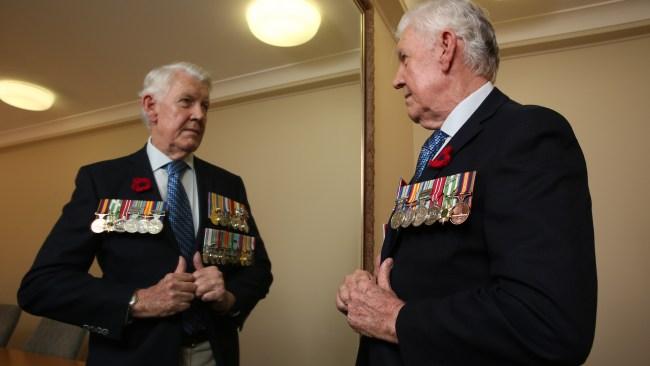
REFLECTING on his ancestors’ service as well as his own ahead of Sunday’s Anzac Day commemorations, Mr Loft says he had gained a new understanding and appreciation of the struggles faced by Diggers in earlier wars.
“These were men who never expected society to look after them, they knew there was a war to be fought and they put their hands up for it.
“They were fighting for king and country whereas from Vietnam, where I served, and onwards you were fighting for the guy beside you.
“It had nothing to do with king and country by then. It was about your mates and if you had to die then you would but it was all about your mates.
“Most of my Vietnam history was serving on a guided missile cruiser in the Gulf of Tonkin and, thankfully, I didn’t see any horrors.”
“H.E Lofts fought overseas for six or seven years while Bernard Fallon was away for nearly 12 years.
“They both gave their lives to the service.”


Add your comment to this story
To join the conversation, please log in. Don't have an account? Register
Join the conversation, you are commenting as Logout
Sharks unveil huge new stadium, $500m mega development
Southport Sharks has unveiled plans for a near-21,000-seat stadium and three residential towers in a massive redevelopment that could reshape the Gold Coast's sporting landscape.
Revealed: All Coast’s options for solving gridlock nightmare
The Gold Coast's population will surge by 350,000 in two decades, but the city's transport blueprint remains in limbo after light rail's dramatic cancellation. FIND OUT MORE